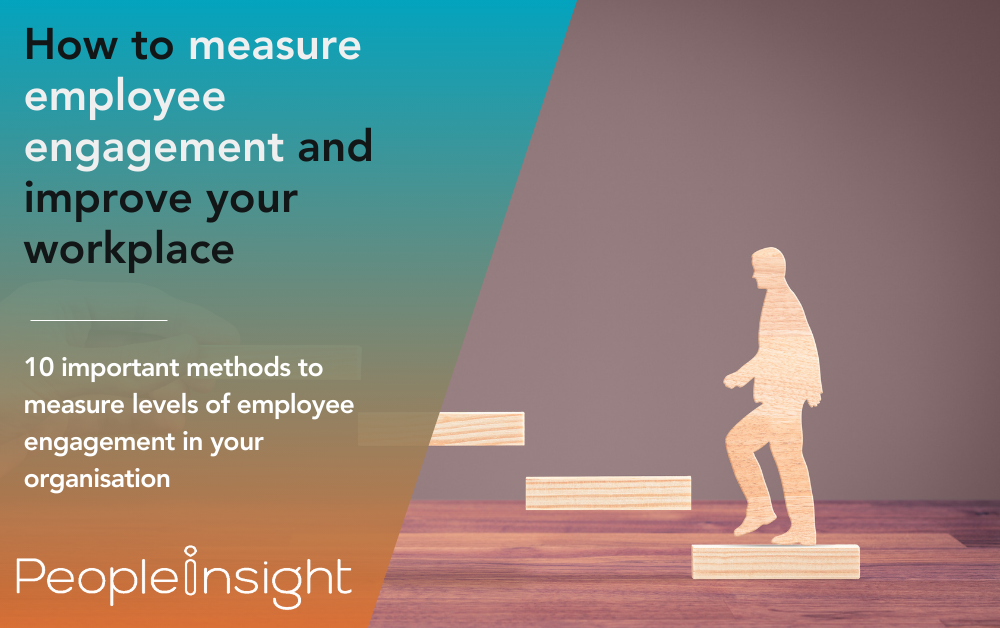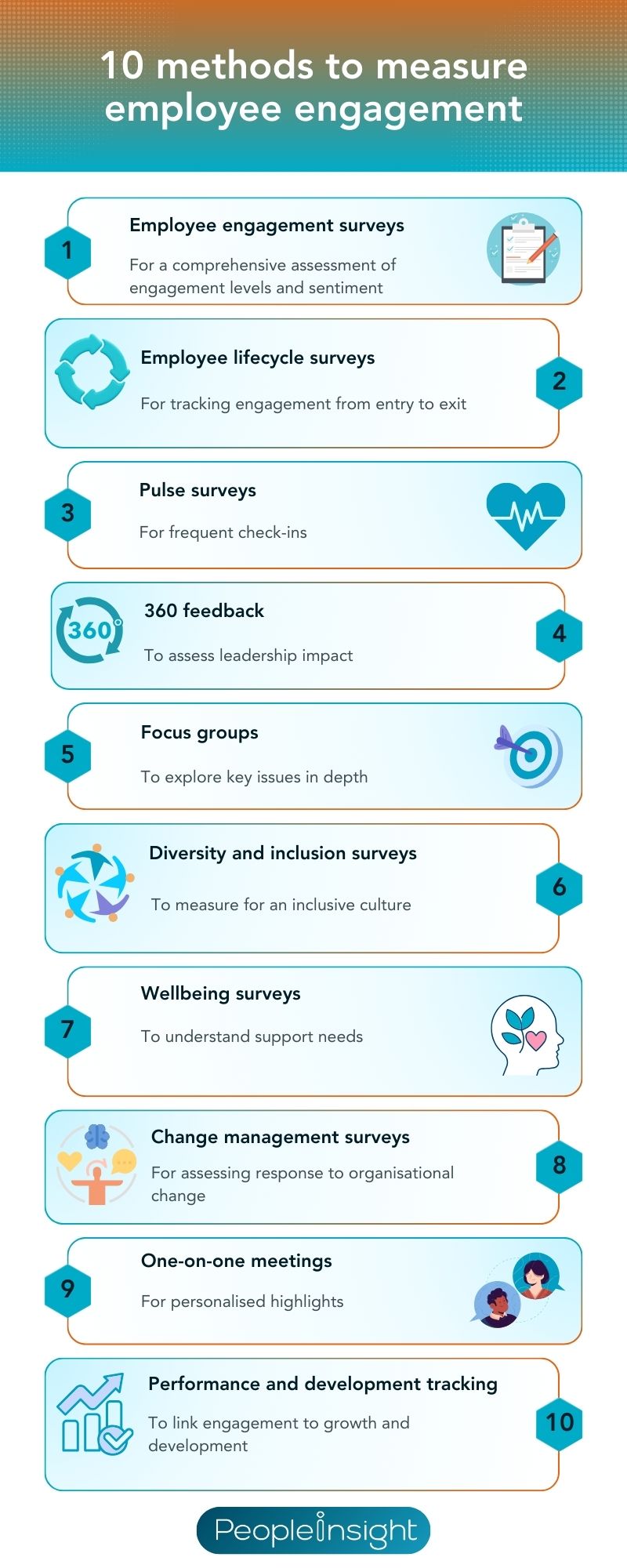
Companies looking to boost performance often turn to the topic of employee engagement — for good reason.Understanding how to measure employee engagement is the first step to boosting levels of productivity, retention and wellbeing. It’s been shown that engaged employees are more motivated and committed to organisational goals, while disengaged employees can seriously negatively impact overall morale. So establishing current levels of employee engagement within your organisation, then striving to improve them, makes good business sense.
So how do you go about measuring employee engagement? We’ll talk you through ten effective methods below, compiled through years of experience in the fields of HR and leadership. But before we discuss how to measure employee engagement it’s worth first answering the question — why is it even important?
Related: Check out our 50 employee engagement statistics
When it comes to running a business, most of us know that data is our friend — the more we have, the more insights we have, the better and more informed our decisions. That means we can drive our businesses forward in meaningful ways.
Regularly measuring employee engagement gives data-driven insights into the drivers of performance and morale. Engagement levels fluctuate due to factors like leadership changes or external pressures, such as economic shifts. Measuring these drivers allows organisations to support staff effectively and align efforts with cultural values, ultimately boosting organisational impact.
Related: What drives employee engagement?

We live and breathe employee engagement here at People Insight — our experienced HR consultants have put their heads together and come up with ten ways to measure employee engagement.
Employee engagement surveys are a core tool for measuring how employees feel about their work, culture and development opportunities. These surveys provide a broad view of engagement across departments and demographics. Comprehensive survey models like People Insight’s Pearl™ model of employee engagement offer reliable benchmarks for assessing and improving engagement.
If you’re wondering how to measure employee engagement, it’s likely you feel you might have an engagement problem. If that’s the case, you want to take a good look at the average employee journey at your company and ask — when and where does engagement rise and fall? And why?
Employee lifecycle surveys track engagement at key stages, from onboarding to exit. Collecting data throughout the employee lifecycle helps organisations understand the evolving needs of their workforce. This can reveal points where engagement dips, helping refine processes and build a positive, engaging experience across every phase of employment.
Pulse surveys are shorter, focused surveys that provide feedback on specific areas or events. They are especially useful following major organisational changes, allowing leaders to track responses to remote working, new policies or reorganisation. Pulse surveys keep engagement strategies relevant without overwhelming employees with requests for feedback.
Related: Check out our pulse survey guide
Leadership directly impacts employee engagement. A 360 feedback tool like ours helps measure how aligned leaders’ behaviours are with company values and employee expectations. Research shows that employees with empathetic leaders are more likely to feel engaged. They are also likely to inspire more creativity and innovation in their employees.
Set up a successful 360 program by using a behavioural framework relevant to your organisation, explaining the purpose of feedback and scheduling follow-up sessions.
Focus groups provide opportunities to discuss survey results and explore specific engagement issues in detail. These groups are effective for understanding nuanced feedback and creating actionable steps based on employee input. Facilitating focus groups with a neutral party can also encourage open, honest feedback, helping to identify areas for change while reinforcing inclusion.
Diversity and inclusion surveys measure how supported employees feel regarding representation and fairness. By tracking employees’ experiences of inclusivity, you can identify and address areas where people may feel overlooked or unsupported. D&I surveys can guide improvements in organisational culture, ensuring that all employees feel valued and engaged.
Wellbeing surveys measure employees’ physical and mental health and their perceptions of support at work. During the COVID-19 pandemic, many companies implemented wellbeing surveys to gauge the impact of remote work and health-related challenges. Measuring wellbeing shows employees that their overall health matters, and insights can inform initiatives that enhance support across the organisation.
Change management surveys collect feedback from employees during significant organisational shifts, such as mergers, rebrands or strategic pivots. These surveys help gauge employee sentiment and support needs throughout transitions, providing data to guide supportive actions. Change management surveys can highlight pain points and suggest areas where additional communication or resources might ease the transition.
Regular one-on-one meetings provide a direct way for managers to understand individual engagement levels. These meetings allow employees to discuss goals and any challenges they face. Managers can use these sessions to detect early signs of disengagement and make adjustments to support employees more effectively.
Tracking employee performance reviews, goal achievement and promotions can provide indirect insights into engagement. Engaged employees typically show steady development and participate actively in growth opportunities. Monitoring performance and development trends offers a holistic view of engagement and identifies areas where additional support may be beneficial.
Interested in measuring employee engagement at your company? Get in touch today or organise a demo of our platform to see how we can revolutionise worklife for your dedicated workforce.
